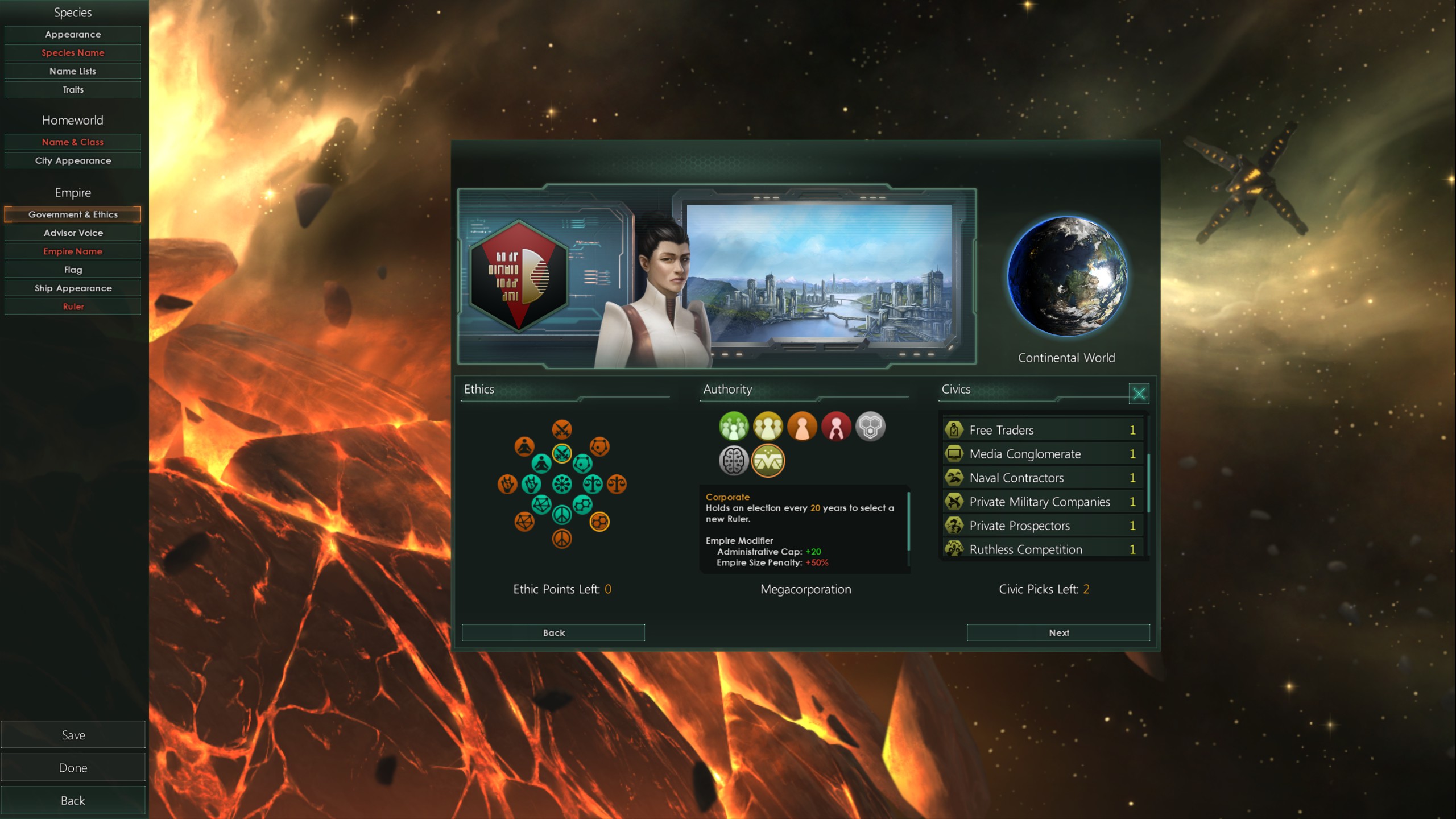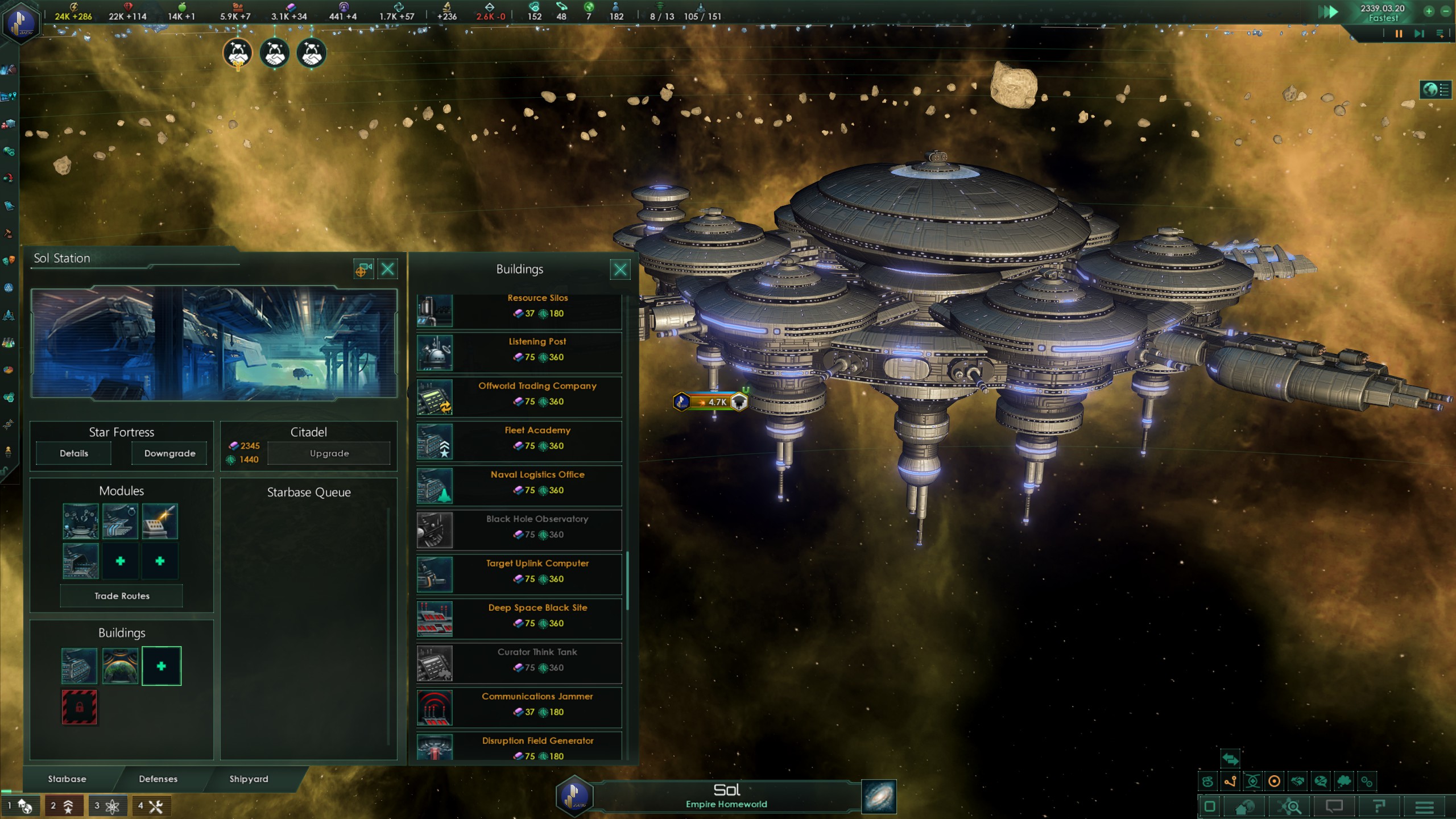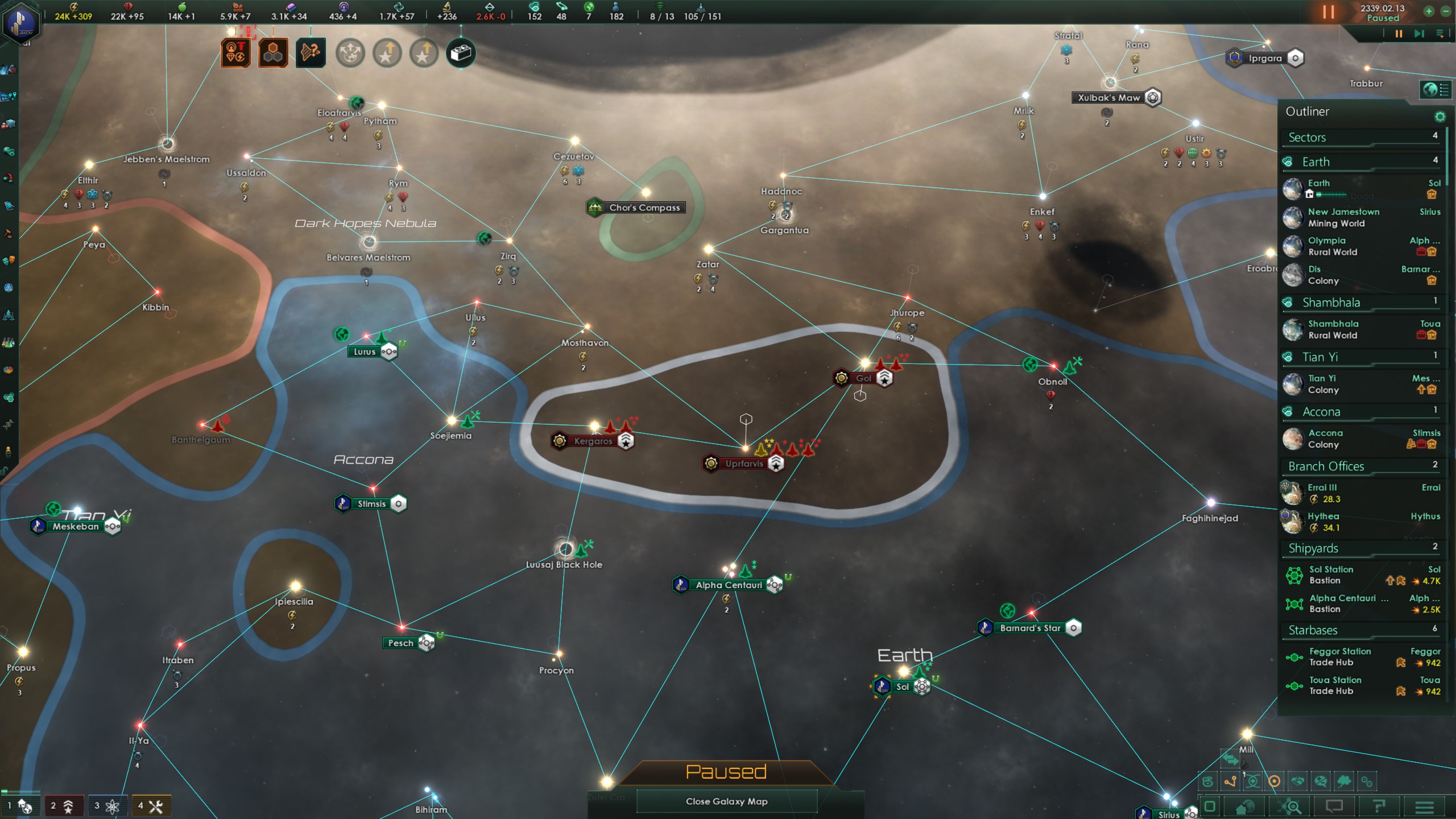Stellaris: MegaCorp lets you make your own version of Weyland-Yutani
The latest expansion makes greed good.

Stellaris has let me play a lot of ethically questionable empires. There was the time I tried to consume the galaxy as a hive of monstrous insectoids, and then there was my playthrough as a robotic legion with a penchant for enslaving every fleshy lifeform it found. None of them gave me as much pause as playing a capitalist corporate empire in the latest expansion, MegaCorp.
With MegaCorp, Paradox is digging into another science-fiction mainstay: giant corporations and organised crime syndicates like Alien’s Weyland-Yutani, the Hutts of Star Wars and Star Trek’s Ferengi. They like money and, for the most part, don’t mind how they go about getting it. The less pleasant the methods, the greater the profits.
I’m at the mid-game of my own MegaCorp experiment, modelled on the aforementioned Weyland-Yutani. Corporate governments have their own set of civics, like hives and AIs, separate from the regular list, including one obviously inspired by the company’s motto, “Building Better Worlds”, netting you private colony ships to better expand your reach. Another lets you foster greater unity through propaganda and PR—a media empire. You can even create evangelical mega-churches that don’t so much blur the line between religion and commerce as completely smash it.

Ultimately, these corporations still broadly function like empires, warring, and exploring just like their neighbours. There’s a lot of flavour, good flavour, but the moment-to-moment experience is familiar. What MegaCorp does is give you a lot more (and a lot more interesting) options when it comes to making money and fiddling with your economy. Along with the civics, there are special actions corporations can take, such as creating branch offices on worlds within empires that they have a trade deal with. These offices let you actually build on alien worlds, though in a limited capacity, which is why the harmonious collective of friendly space jellyfish that live next door to me now have horrible fast-food chains and entertainment megaplexes.
Branch offices might be too great a source of wealth. I didn’t build any in the early part of my game, so I was still occasionally low on cash even when I was enslaving aliens, experimenting on aliens and generally just being a dick to aliens. Once I remembered to start taking advantage of my trading partners, however, I quickly became one of the uber-wealthy. The risk is that these trade deals could end for any number of reasons, quickly reducing my income.
New deal
There are other ways to make cash when those sources dry up, though. There’s a new economic resource that comes with the Le Guin update, whether you have MegaCorp or not, called trade value. It represents the economic output of your empire and can be affected by jobs, resources mined across the galaxy, starbases with trade modules and lots of other things. Trade value can be sent to your capital world from other places, like starbases, via trade routes, but these can be preyed on by pirates, making these space-faring menaces this persistent threat to your economy, not just a military concern.

Planetary management is another big change that comes with the free Le Guin update. That probably undersells it. Planetary management is one of Stellaris’ biggest ever overhauls. The new planetary screen is pretty hard to parse, unfortunately, and it takes a bit of getting used to, but I’ve definitely been converted to the system itself. Stellaris has always made pops central to the game, and their traits, which you can eventually tweak through genetic and synthetic manipulation, have a significant impact on your empire. Le Guin places another layer on top of that: their role on the worlds they inhabit.
The biggest gaming news, reviews and hardware deals
Keep up to date with the most important stories and the best deals, as picked by the PC Gamer team.
Every pop has a job (unless they’re unemployed) ranging from miners to merchants. The type of jobs available and buildings they can work in depends on everything from species traits to the laws of your empire. A new species you’ve just welcomed into your empire might be physically incapable of mining, while slavery laws might mean certain jobs would automatically be outlawed.
Jobs are fundamental to resource production, with each level of society—workers, specialists and rulers—providing a different kind of resource. As you fill your worlds with new workers, you have considerably more freedom to specialise and tweak than you did with the basic ‘plonk down a building and move a random pop on top of it’ method of planetary management Stellaris had before. You’re no longer limited by a small set of tiles, and a planet’s output is much more dependent on who is living on it.

As well as building regular structures, you’ll also develop specialised districts, allowing you to host a larger population, grow more food or mine more minerals. Districts are the foundations of your worlds, giving you the basic building blocks of an empire and offering clear solutions to a lot of problems. Got a food deficit? Create another agricultural district. Need to churn out more ships? Focus on industrial districts. Specific buildings then allow you to further enhance the world, as well as creating new jobs for your citizens.
It's getting crowded in here
The changes to planet management also introduce new wrinkles. Instead of the number of pops on your world being limited to the number of free building tiles, there’s a soft cap based on how many housing districts you’ve constructed. And even if you don’t have enough housing districts, new pops can still appear, causing overpopulation. If you’ve already built up all your districts, you might have to take the hit, force them to move to another world or tear down one of your industrial or agricultural districts. Pops will take jobs and find homes automatically, so the micromanagement isn’t intensive, but when problems appear, you do need to roll up your sleeves.
These districts are limited by how big the world is and how many hazards remain, but the number can also be dramatically expanded, allowing to you maintain a vast population by turning the world into a giant city planet. You’ll need MegaCorp if you want to create an Ecumenopolis, and it’s something I’m still working towards. It’s a big endeavour and requires you to completely max out the number of city districts you can build, which also means you have to remove all other kinds of districts. But one day soon, I’ll have my very own Nar Shaadaa.

While it’s far from the expansion’s most essential feature, the Ecumenopolis is a great example of Paradox using a sci-fi trope to make a novel system. Like many of the city-worlds conjured up in literature and film, Stellaris’ have sacrificed resources for population. They’re not sustainable alone, and while they might technically support these untold numbers of citizens, they’re really reliant on the rest of the empire. They’re monuments to technological advancement, but they’re also monuments to arrogance, destroying the world to cater to more and more people.
Being able to get into the nitty-gritty of the economic side of things brings Stellaris closer to Victoria II, Paradox’s unsung Industrial Age grand strategy outing, which is pretty unexpected given that, until now, it was one of Stellaris’ weaker elements. I just hope I can encounter something that can stop me and my fat wallet from steam-rolling the galaxy. There’s a nasty band of reavers nearby that I’ve been trying to get tough enough to square up to, and I think it’s time I knocked on their door.
MegaCorp is out now.

Fraser is the UK online editor and has actually met The Internet in person. With over a decade of experience, he's been around the block a few times, serving as a freelancer, news editor and prolific reviewer. Strategy games have been a 30-year-long obsession, from tiny RTSs to sprawling political sims, and he never turns down the chance to rave about Total War or Crusader Kings. He's also been known to set up shop in the latest MMO and likes to wind down with an endlessly deep, systemic RPG. These days, when he's not editing, he can usually be found writing features that are 1,000 words too long or talking about his dog.

